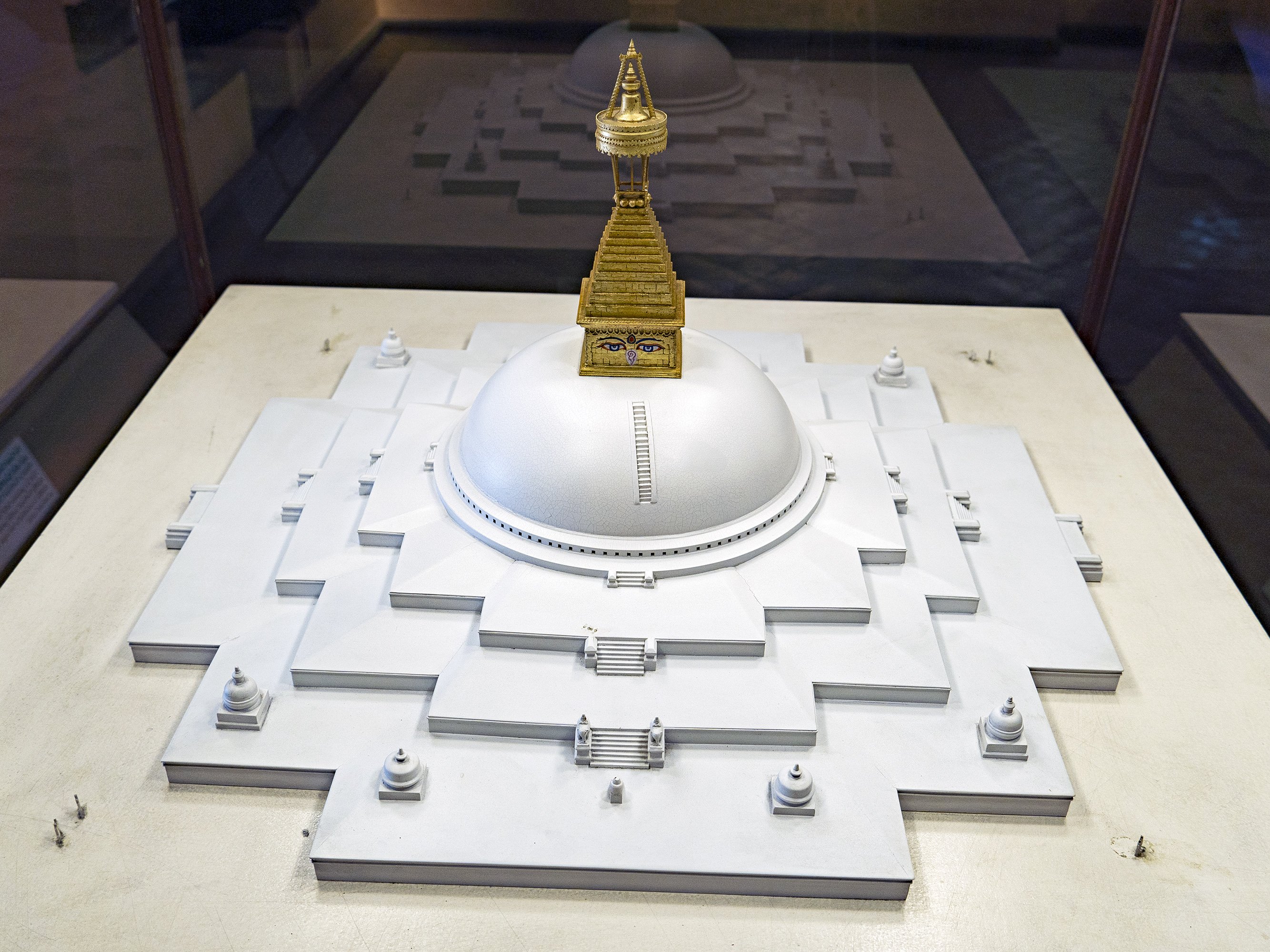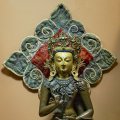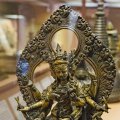Patan Museum (Nepal): photo 131
Photo 131 of 212 in Gallery: Patan Museum (Nepal)

Image title: The Great Chaitya of Boudhanath
Description of the photo
The Great Chaitya of Bodhnath [Boudhanath]—Also called: Bauddha, Byarung Kashor, Khasa, Khasti. Khasau or Kashyapa Chaitya—
There is a persistent belief that the remains of the Mortal Buddha Kashyapa, earthly predecessor of Shakyamuni Buddha, is entombed in this stupa, thus accounting for its alternate names. The Chaitya of Boudhanath [Bodnath] is one of the oldest and by far the largest of all chaityas in Nepal (see comparative drawing nearby).
This model of the Bodnath Stupa was built in 1996 by Rabindra Pari of Bhaktapur at the Hannemann Modellbau Werkaat in Oldenburg, Germany. It is based on survey drawings of Bijay Basukula As a gift to the Patan Museums, this exhibit was jointly sponsered by Wolfgang Hannemann, Rabindra Pari and the Austrian Government.
The cube below the finial bears the stylized face of the Buddha with his all-seeing eyes. Between the eyes is a curl of hair (urna), one of the special signs of a Buddha. The question-mark shape below alludes to miraculous rays of light emanating from the urna. The crest jewel (cudamani) atop the central pillar symbolizes the cranial bump (ushnisha), considered the essence of the Buddha. The thirteen steps of the finial the gradual progression towards Buddhahood. represent stages in.
In all likelihood, the Licchavi king Manadeva I established the first chaitya at the site of Boudhanath [Bodhnath] toward the end of the 5th century. A thousand years later a Tantric master of the Nyingma order of Buddhism from Tibet ordered the neglected remains unearthed and restored. The restoration entirely covered the early chaitya beneath a bulgy dome which followed the prototypes of Svayambhu and Chabahil. It was then known as Byarung Kashor Chaitya, literally “permission to do what is proper”.
Innovations of the Tibetan reconstruction include the stepped mandala-shaped plinth with twenty angles, and the incorporation of a sacred number of 108 small niches in the drum below the dome. The Five Transcendent Buddhas are placed in the niches, along with many deities of the Nyingma Buddhist pantheon. A new finial was added in the early 17th century, and the finial and cube were covered with gilded copper in 1821. Since that time the chaitya has remained largely unchanged.
Gallery information:
The Patan Museum is located on the Durbar square of Patan (Lalitpur/Lalitapura, Kathmandu, Nepal) which is associated Keshav Narayan Chowk (Keshavnarayan)—a form of Lord Vishnu. Being listed as a World Heritage Site, the whole of Durbar square is filled with exquisite temples, sculptures and other ancient structures, of which the ancient history history can be traced to the Malla Kings of Lalitpur. It is an important site for both Buddhism and Hinduism.
Photo details:
Date: 2019-12-02
Camera: SONY ILCE-6400
Exposure: 1/30
Aperture: f/4.5
ISO: 100
Focal length: 18mm
High resolution:
Download file
Size: 2.39 MB
Resolution: 2667 x 2000
© Photograph by Gabe Hiemstra.
License: CC BY-NC-ND 4.0

